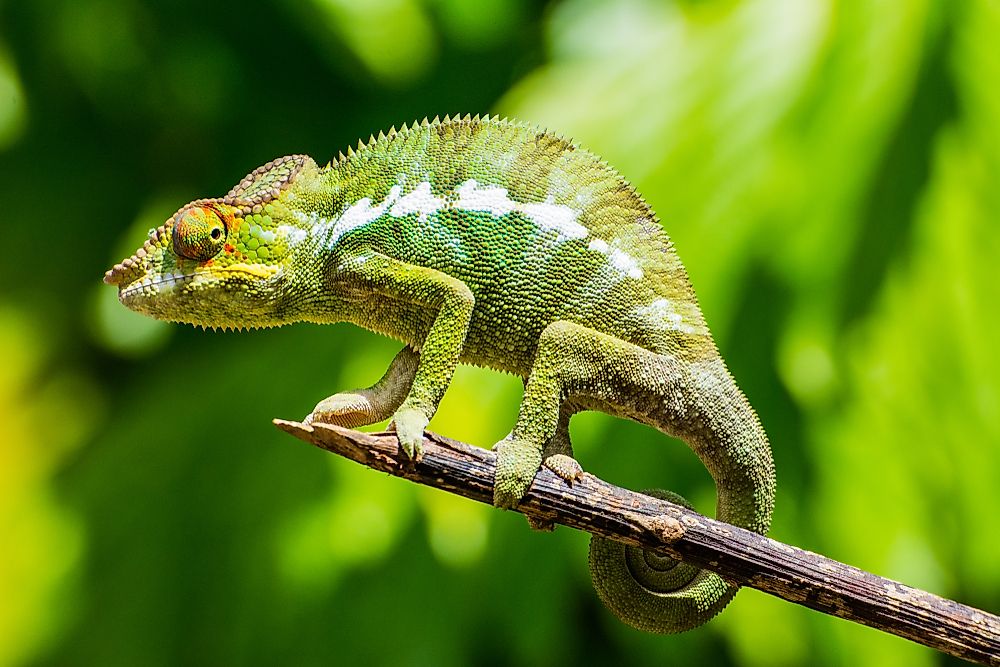Is A Chameleon A Reptile?

Chameleons are most famous for their ability to change colors. Other distinctive features include acrodont dentation, eyes that can move independently of each other, and zygodactylous feet. Chameleons also have atrophied venom glands which produce harmless venom. The chameleon is a reptile and may confuse some people who encounter them since some species give birth to live offspring like mammals as opposed to laying eggs like other reptiles. The chameleon is identified as a reptile due to its cold-blooded nature, unlike mammals that are usually warm-blooded. There are over 150 species of chameleons’ with over half of them residing in Madagascar while the rest are found mostly in sub-Saharan Africa. There are however two species found outside Africa, namely Chamaeleo zeylanicus which is found mainly in southern India and Sri Lanka and the European chameleon (C. Chamaeleon) which is predominantly in the Middle East and Southern parts of Spain.
Size
The Parson’s chameleon is the largest species of chameleon and can grow up to 27 inches while the leaf chameleon is the smallest and grows to just 0.5 inches. Chameleons grow throughout their lifespan and shed their skin in bits, unlike snakes that shed all their skin at once.
Color Change
According to scientific studies, chameleons change the color of their skin due to an array of factors including emotions such as fright and environmental factors such as temperature and light. The mechanism of color change involves the manipulation of pigment granules through dispersion or concentration. The chameleon’s autonomic nervous system controls the pigment granules (melanophore cells). Male chameleons produce some of the most vivid coat colors during the mating season with females preferring to mate with brightly colored males as opposed to those with gray and brown skins worn by submissive males. A chameleon's eyes can move independently and are adapted to detecting and regulating light, of particular interest is the ability of the chameleon to adjust its eye lens to enlarge visual images.
Diet
Chameleons have a rapidly extrudable tongue that enables the capture of insects at a distance. Larger chameleons are also able to prey on small lizards and birds. A chameleon captures its prey by launching its tongue to a distance longer than twice its body length with pinpoint accuracy at its victim which gets stuck at the tip of the tongue. Retractor muscles then draw the tongue and prey back into the mouth.
Reproduction
Most chameleons reproduce by laying between 2 to 40 eggs, which are buried in soil or rotting plant matter. However, there are some species such as Jackson's chameleon that give birth to live offspring. The young ones of these species, however, do not have placentas since the females incubate their eggs inside their body instead of laying the eggs. Typically, chameleons reach sexual maturity in 1 to 2 years except for the Madagascan chameleon which reaches maturity in just two months and then dies a month later after reproduction.
Conservation
An estimated 36% of chameleon species are currently facing the threat of extinction. Habitat degradation by human activity is by far the greatest threat to the species since chameleons are range-restricted (occupy small geographical areas such as a single mountain). Other threats include climate change and the illegal and often unsustainable pet trade.











